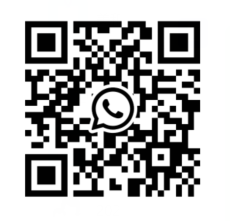NFC vs QR Code: What are NFC QR Code Tags?
Nov 10, 2025
In our highly interconnected world, the gap between physical goods and digital information is rapidly narrowing. Two technologies are leading this connectivity: the familiar QR code and advanced Near Field Communication (NFC). You'll see them on products, posters, and payment terminals.
This guide explores a powerful hybrid solution that combines the advantages of both: NFC QR code tags. Our goal is to help you understand them so you can make strategic choices for your business or project.
Understanding the Basics
Before making a choice, it's crucial to understand the basics of each technology. While they share similar goals, they operate fundamentally differently.
What is a QR Code?
A QR code, or Quick Response Code, is a two-dimensional matrix barcode. It stores data in a grid of black and white squares. This pattern is designed for rapid decoding by imaging devices such as smartphone cameras.
What is NFC?
NFC stands for Near Field Communication. It's a short-range wireless communication technology. It allows two electronic devices to exchange data within a few centimeters of each other. NFC works on the basis of radio frequency identification (RFID).
Direct Comparison
A direct comparison of key parameters reveals the inherent strengths and weaknesses of each technology. This analysis is crucial for making informed decisions.
User Interaction and Friction
User friction is the most important factor. QR codes require active user interaction. Users must consciously decide to scan and perform multiple steps. NFC, on the other hand, is a passive technology for users. The operation is simplified to a simple and intuitive touch.
This difference has a significant impact on user engagement. A study by the mobile interaction platform Blue Bite found that NFC has three times the interaction rate of QR codes. The lower the friction, the higher the conversion rate.
Speed and Convenience
Successfully scanning a QR code takes several seconds. This includes launching the application, aiming, and processing. However, NFC interactions are almost instantaneous. Touch operations are typically completed in less than a second.
This makes NFC more advantageous in high-throughput environments. For example, millions of people use contactless NFC payments on public transport systems such as the London Underground every day.
Data Capacity and Flexibility
QR codes boast extremely high data capacity, storing up to 7089 numeric characters. This is sufficient to store long URLs or complex text strings. NFC tags, on the other hand, have a much smaller memory capacity. Standard tags typically range from 144 bytes to 888 bytes.
However, this isn't as significant a limitation as it may seem. The most efficient use of both technologies is storing simple URLs or unique identifiers. The heavy lifting of displaying rich content is handled by the webpage the tag points to.
Cost
Cost is a key factor for large-scale deployment. Generating QR codes is virtually free. The only cost is printing them onto a surface.
Simple NFC stickers can be purchased in bulk for as little as 10 cents each. More durable branded tags cost between $1 and $2 each, and the price gap is narrowing.
Security Considerations
Standard QR codes are inherently insecure. Anyone can scan them, and they are easily replaced or have malicious code pasted onto them.
NFC offers superior security features. Some NFC tags can be encrypted and password protected. They can also be set to read-only mode to prevent tampering. High-security NFC chips, such as the NTAG 424 DNA, provide encrypted authentication, making them ideal for product authentication and access control.
Hybrid Solution: NFC QR Code Tags
What if you didn't have to choose? The most powerful solutions often combine the advantages of two technologies. This is precisely the idea behind NFC QR code tags.
What Are They?
An NFC QR code tag is a physical product that integrates two technologies. It is both an NFC tag and has a QR code printed directly on its surface. This builds a universal bridge for digital content. This two-in-one solution can meet the needs of the entire market.
Strategic Advantages of Hybrid Tags
Its main advantage lies in its versatility. Tech enthusiasts with modern NFC-enabled phones can enjoy a superior touch experience. Users with older devices or those who prefer traditional methods can scan the QR code using their camera.
This is especially suitable for public places or high-value products, as you cannot predict the type of device or technical level of the user. Furthermore, it can be used as an educational tool. The QR code is clearly visible, and the "tap or scan" prompt guides users to use the simpler NFC functionality. More importantly, it provides built-in redundancy. If the NFC tap fails, the QR code serves as a reliable backup.
How to Choose: A Decision-Making Framework
Say Goodbye to Guessing. Use this practical framework to choose the right technology based on your specific goals, audience, and constraints.
Reasons to Choose QR Codes:
Your project needs to be as cost-effective as possible. For large promotional events with limited budgets, QR codes are the undisputed choice. You need to deploy the solution to your online or offline audience immediately. You are running a short-term promotion and can accept temporary signage.
Reasons to Choose NFC Tags:
User experience is your top priority. You need the fastest, smoothest, and most engaging interactive experience. Your project involves product authentication, access control, or any scenario requiring trusted elements. Security is a non-negotiable requirement.
The tags will be placed in challenging environments. This includes dimly lit areas, behind glass, or on moving objects.
Reasons to Choose NFC QR Code Tags:
You need a future-proof, fully functional solution to meet the needs of all users. You are deploying permanent installations such as museum exhibits or real estate signage. Your product is high-value, and you want to provide a premium (NFC) and convenient (QR code) interactive experience.
The Future of Physical-Digital Connectivity
These technologies are not static but constantly evolving, aiming to build deeper and more secure connections between the physical and digital worlds.
Digital Product Passports
Driven by the EU's new circular economy regulations, the concept of "digital product passports" is emerging. This will require products to carry records of their materials, manufacturing processes, and recyclability. QR codes and Near Field Communication (NFC) are ideal physical links to connect this data, promising to set a new standard for consumer transparency.
The Evolution of NFC
The NFC Forum is continuously working to improve the standard. Future iterations are expected to achieve longer reading distances, faster data transfer speeds, and more advanced energy-saving features. This will open up new application scenarios for the Industrial Internet of Things (IIoT) and smart retail. Chip security is also rapidly improving, making it suitable for digital keys and identity documents.
The Maturation of QR Codes
QR codes are also becoming increasingly intelligent. The widespread adoption of dynamic QR codes is a key advancement. Services like Bitly and QRCode Monkey allow marketers to change the target URL after printing. They also provide rich analytics data on scan location, time, and device, filling a data gap previously dominated by NFC.
Final Conclusions and Key Takeaways
There is no absolute winner in the NFC vs. QR code debate. The right choice depends on strategy, your specific circumstances, and your goals.
QR codes are ideal for cost-effective, mass-market, and ad-hoc marketing campaigns. Their advantages lie in their simplicity and universal accessibility via smartphone cameras. They are an effective tool for achieving broad coverage.
NFC is ideal for creating a superior, secure, and seamless user experience. Its advantages lie in its speed, security, and the convenience of a single touch. It enables deeper user interaction and trust.
NFC QR code tags are the ultimate comprehensive solution. They bridge the technology gap, ensure all users have access to the services they need, and are the most robust and future-proof choice for permanent installations and high-value products.
اقرأ المزيد

